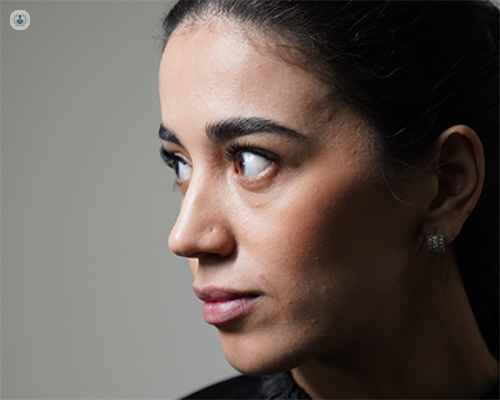Understanding septorhinoplasty: procedure, recovery, and downtime
Autore:Septorhinoplasty is a surgical procedure aimed at improving functional nasal breathing. In this informative article, esteemed consultant ENT surgeon, Mr Kristian Hutson, explores the procedure, its potential discomfort, safety considerations, post-operative care, and the recommended downtime for optimal recovery.

How is a septorhinoplasty performed?
The operation can be performed using either an open or closed technique. The choice of technique depends on the surgeon's preference, the complexity of the procedure, and the patient's specific requirements.
In the closed technique, incisions are made inside the nostrils, concealing any scars from view. The surgeon will then access and reshape the nasal bones and cartilage through these incisions.
The open technique involves a small external incision at the base of the nose, providing better visibility and control during the surgery. The surgeon will lift the skin and soft tissue to access the nasal structures for reshaping and refinement.
Is this a painful procedure?
During the septorhinoplasty procedure, patients are placed under general anaesthesia to ensure their comfort and safety. After the operation, it is essential to note that some mild pain or discomfort is typical during the recovery phase, which can usually be managed with over-the-counter pain medication.
How safe is septorhinoplasty surgery?
Septorhinoplasty surgery is general a safe procedure. As with any any surgical procedure, there are inherent risks. These include but are not limited to unfavourable scarring, bruising, swelling, discomfort, infection, bleeding, adverse reactions to anaesthesia, failure to straighten elements of the nose or improve function, septal perforation, undesired changes to the nasal shape, loss of sense of smell, numbness, irregularities and asymmetry, and the need for revision surgery.
How long do you have to be careful with your nose after septorhinoplasty?
After septorhinoplasty, patients should exercise caution and follow the post-operative instructions provided by their surgeon to ensure proper healing and minimise potential complications. Most patients will have a cast or splint externally on the nose for 7 days. Generally, patients are advised to:
- Avoid touching or bumping the nose to prevent disruption of the healing process.
- Refrain from strenuous activities or exercises that could strain the nasal area.
- Sleep with the head elevated to reduce swelling.
- Avoid wearing glasses on the nose for the initial weeks.
- Keep the nasal passages moisturised as directed by the surgeon.
The duration of this period may vary depending on the individual's healing progress and the extent of the surgery. Most patients should start to notice results such as easier breathing within a week or two, with continued improvement for several months. By six months post-surgery most patients should be mostly healed however it can take up to a year before the final result.
How much time do you need off after a nose job?
The amount of time off needed after a nose job will depend on the individual and the complexity of the procedure performed. Generally, patients can expect to take around one to two weeks off work to allow for proper recovery. During this time, swelling and bruising will gradually subside, and patients can start resuming light activities as they feel comfortable. Generally, strenous exercise should be avoided for four to six weeks. However, it is essential to follow the surgeon's advice regarding post-operative care and activity limitations to avoid any complications and achieve the best possible results.
To book an appointment with Mr Kristian Hutson today, head on over to his Top Doctors profile.


